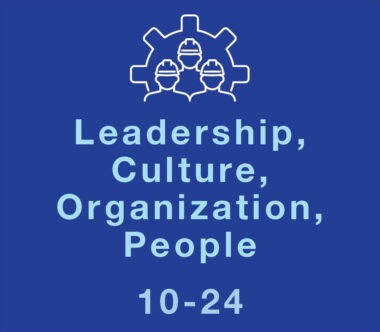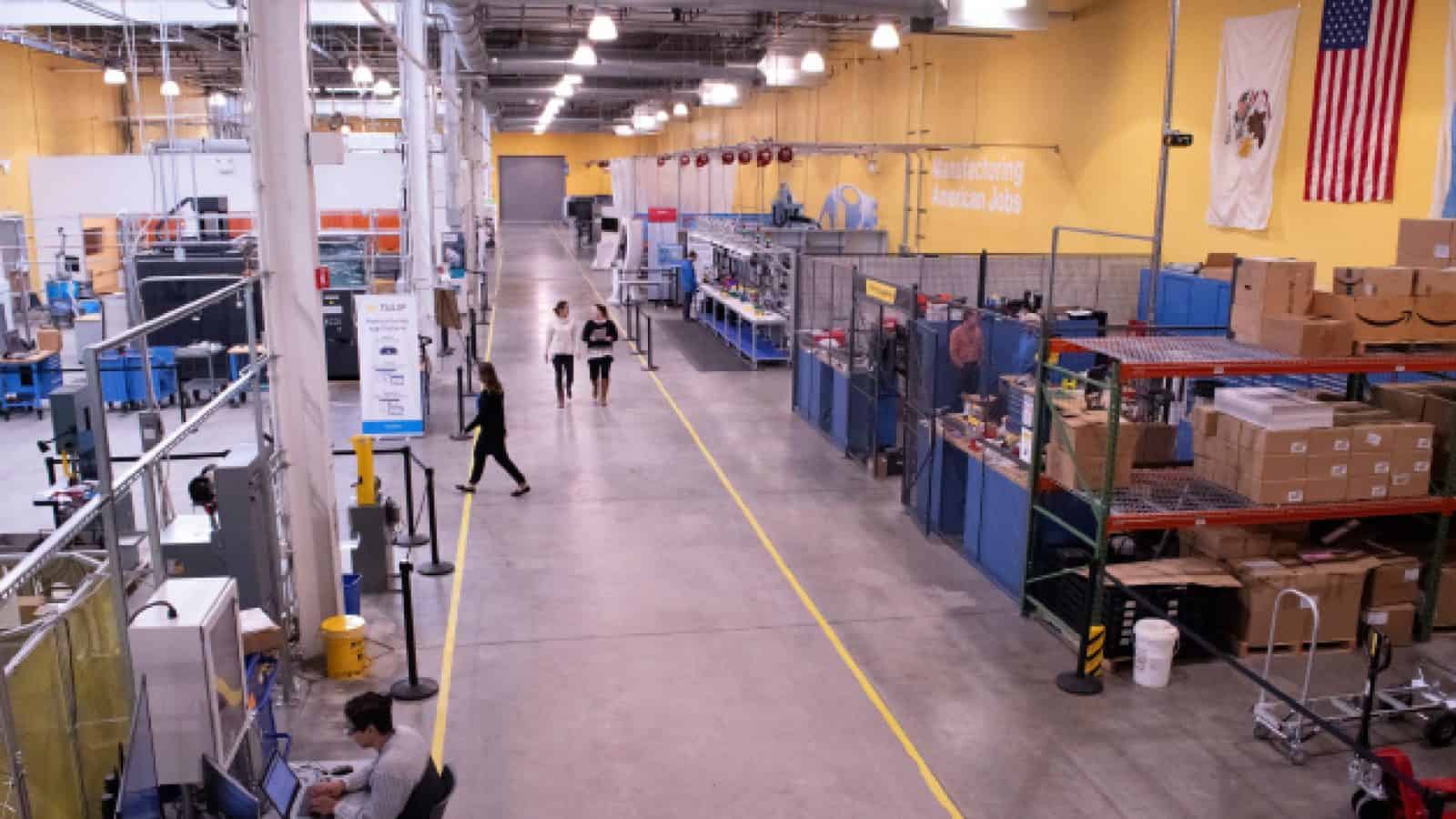How Leaders Can Improve Frontline Worker Stability and Productivity

To unlock the full potential of their frontline workforce, manufacturers should develop a holistic talent strategy based on 5 critical factors.

TAKEAWAYS:
● Due to massive workforce churn, talent has become a top issue for CEOs, surpassing even revenue.
● Leaders are treating talent as an investment similar to capital and are building holistic workforce operating models.
● Top areas of investment are work re-design, talent analytics, and the employee experience.
In 2023, more than 4.7 million workers in US manufacturing parted ways with their employers—a large majority voluntarily—due to factors including the pursuit of different work/life balance, some retirements, and some redundancies. This represented a full third of the manufacturing workforce.1
This high level of churn accentuates a backdrop of persistent productivity challenges, with labor productivity in US manufacturing decreasing significantly between 2007 and 2019 and only achieving sluggish growth since 2020. 1
Talent is now one of the most pressing issues for CEOs—an even higher priority than revenue.2 But some companies are bucking the trend and successfully addressing the dual challenges of talent stability and productivity.
These leaders are doing three things differently:
First, they treat talent as an investment similar to capital, ensuring they deliver an attractive talent value proposition covering aspects like culture, compensation, career development, and flexibility. These leaders also regularly track the effectiveness of their strategic talent approach, and course correct where necessary to ensure they are investing in a portfolio of talent initiatives to generate the desired return on investment.
Manufacturers should ensure they are delivering an attractive value proposition to frontline employees.
Second, they build a holistic workforce operating model, continuously optimizing activities and roles, including identifying opportunities for capability building, particularly at the supervisory level, where McKinsey has found that supervisors tend to spend less than a third of their time on people-related or team building activities. This frontline-focused approach integrates Operations, HR, and Finance to provide a 360-degree view of what the business and the workforce requires to realize productivity and stability aspirations.
And third, they deploy proven innovations and technology by investing in areas like work re-design, talent analytics, and employee experience to correct frontline pain points and generate value for employees and the business. Examples of such initiatives include shift swapping and flexible scheduling solutions, and leveraging AI to uncover skill gaps, identify development opportunities, and assist supervisors.
Arriving at these three strategic shifts requires companies to evaluate their performance through five lenses that can inform a roadmap of actions to achieve workforce excellence.
To develop an effective talent strategy that improves workforce stability and productivity, manufacturers can start by evaluating their organization through five critical lenses:
1. Understand frontline performance in relation to the local market
Mapping the local market can help manufacturers understand the archetypes at play in their relevant metropolitan statistical area (MSA). Important questions to ask are: what talent is available, what are the demographics, and what are the current job vacancies? With these insights in hand, companies can determine the projected growth in labor demand and supply within their markets, and where their competitors are active or exiting.
To develop a comprehensive market understanding, labor market research can also look at the talent stability and productivity performance trends within the local market context. For example, indicators such as attrition, absenteeism, time to fill open roles, time for new employees to reach full productivity, contribution margin, and throughput volume per full-time equivalent (FTE) can be examined.
Once companies understand the labor opportunities at a particular site, they can determine how to attract new talent and make longer term evaluations, such as considering talent relocation to satellite sites.
2. Assess the strength of the employee value proposition
With five generations active in the workforce, the employee value proposition requires “mass personalization,” based on the unique needs of employee segments as well as common workforce needs.3
Leaders in workforce stability and productivity actively seek out these insights, running frontline surveys at various intervals (for example, semi-annually) and augmenting these with focus groups to gather on-the-ground, firsthand feedback. Advanced analytics can also be applied to create employee clusters, each with different preferences and needs, to produce multidimensional, customized, and actionable insights.
Such measures could help organizations determine the strength of their employee value proposition and prioritize investments that enhance retention and engagement of crucial workforce segments. McKinsey research has found, for example, that Gen Z workers stay and are engaged in jobs that offer flexibility, meaningful work, and workplace safety, whereas most other generations prioritize compensation over workplace safety.4
3. Benchmark the integrated Ops–HR operating model
With markets evolving at pace, it is crucial for manufacturers to ensure that available skills match their operational needs, and that talent remains highly engaged to allow for continuous productivity improvements. Having an integrated talent management model, which brings together the Operations and HR functions, can support growth by creating an agile and responsive work environment.
Here, companies can benchmark their integrated operating model against industry best practices across core processes, such as work design, talent planning, and talent management.
One example of impact from such an approach is the shop floor candidate pipeline. Well performing operating models regularly assess the upcoming scheduling needs for production and talent, and then make a collaborative decision on how to get the right talent in the right role at the right time. When they identify pain points such as time to hire (for example, due to delayed job postings) or elevated dropouts in the onboarding process, the team can identify the root cause of the challenge and jointly take action by aligning aspirations, business case, and investment to reach the desired end-state.
4. Reimagine work on the shop floor
For any change to be sustainable, manufacturers need to continuously reassess shop floor work and operations design. Direct frontline engagement at the ground level can help management gain useful insights for improvement, including the use of technology to close skills gaps and build capacity.
Taking a comprehensive approach to reimagine work processes could identify ways for implementing advanced solutions for frontline operations. These, in turn, could lead to increased productivity and innovation across the manufacturing floor. For example, leading companies are now equipping supervisors with AI “copilots” and seeing improved labor productivity and higher frontline retention as a result.
5. Reflect on your current mindset around labor investments
Leading manufacturers realize talent is scarce and technology investments are still no guarantee for capital productivity. Accordingly, they do not view their workforce as a cost, but treat employees as a valuable investment that can generate positive returns.
Such leaders work at finding the optimal combination of capital and labor production factors that will maximize value. They look beyond traditional metrics, recognizing how enhancing workforce stability and productivity benefits the performance and health of their organization overall.
Enhancing frontline workforce stability and productivity is a complex and multi-faceted task set against a challenging context, but there are manufacturers who are succeeding. To match the performance of these industry leaders, companies can create a holistic talent strategy—beginning by evaluating their own performance through five critical lenses.
If the approach outlined above could be adopted broadly within the industry, it might be possible to abate in future years the huge churn experienced in 2023. M
About the authors:

Tyler Freeman, Associate Partner at McKinsey

Marino Mugayar-Baldocchi, Research Science Expert at McKinsey

Fernando Perez, Senior Partner at McKinsey

Julian Salguero, Partner at McKinsey
[1] U.S. Department of Labor, Bureau of Labor Statistics, Job Openings and Labor Turnover (JOLTS) Survey, accessed on July 8, 2024.
[1] ”Industry contributions to productivity growth in U.S. manufacturing: An application of alternative output concepts,” U.S. Bureau of Labor Statistics, September 2023.
[2] 2023 US workforce trends report series: Organizational wellbeing, Gallagher.
[3] Aaron De Smet, Marino Mugayar-Baldocchi, Angelika Reich, and Bill Schaninger, “Some employees are destroying value. Others are building it. Do you know the difference?” McKinsey, September 11, 2023.
[4] Tyler Freeman, Marino Mugayar-Baldocchi, Fernando Perez, and Julian Salguero, “From hire to inspire: Getting—and keeping—Gen Z in manufacturing,” McKinsey, May 6, 2024.
